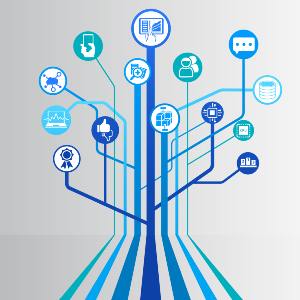
If you are planning on using predictive algorithms, such as machine learning or data mining, in your business, then you should be aware that the amount of data collected can grow exponentially over time.
In a world where big data is becoming more popular and the use of predictive modeling is on the rise, there are steps that need to be taken in order to ensure the quality of your model and to avoid any pitfalls down the line. One of those steps includes conducting what is known as data cleansing.
What is Data Cleansing?
Data Cleaning, also referred to as data preparation or cleaning, is the process of processing data into a usable format and removing any errors that may be causing unexpected results. During the process of data cleansing, the information in your dataset can be manually checked or a set of rules can be applied to automatically process your dataset. The goal of this process is to ensure complete accuracy before it’s put into action within your business.
Why Does this Step Need to be Taken?
There are several reasons why you should include data cleansing in your model development and maintenance. The first reason is that many times, as stated earlier, there will be an exponential growth in the amount of raw information collected. That’s a good thing, but problems can arise when you fail to account for the volume of information.
For example, if you have a big dataset with several thousand records which connects to an email address through the use of an ID number, you might think that email addresses are unique. That may not be the case. It is possible that at one point in time you had multiple entries for the same email address because during the collection process someone forgot to log out of their personal email account before entering into their workplace account to enter a few records. Now, instead of having one record with three different IDs associated with it, there are three records each connected to one email address causing issues down the line.
To better visualize how this would work, let’s take a unique email address for the purpose of our example: aol.com/example@gmail.com
The same email address appears across multiple records in our dataset:
aol.com/example@gmail.com,
aol.com/example@aolmail.com, and
aol.com/example@yahoo.com
In many cases, the same email address can be found across multiple records in the dataset because there was a failure to correct for data submission errors. A simple way to avoid issues down the line is to ensure that all of your business records are correctly logged and connected before you move forward with your predictive modeling process. That’s where data cleansing comes in handy.
Don’t let machine learning lead you astray – this advice applies to predictive modeling as well.
Data cleansing can help you eliminate those issues before they even start by ensuring that every piece of information is completely accurate and ready to go in your model.
How Will Data Cleansing Help My Predictive Modeling Efforts?
Data cleansing will also help you to avoid the ‘hits’ and ‘misses’ problem when using predictive modeling. These ‘hits’ and ‘misses,’ are known as false positives and false negatives, respectively. When your model spits out a high number of wrong predictions, it might be because the dataset you’re trying to predict from doesn’t have enough information in it to make accurate predictions. For example, if your business does not have records for a particular income bracket or age group, your model could contain incorrect predictions that may result in over or under-predicting profits.
Data cleansing can help eliminate this problem because it will result in a cleaner dataset which can contribute to a more accurate model.
There are a few steps that you can take to eliminate false positives and false negatives from your model. The first step is to ensure that your data is clean and the information in it is 100% accurate. The less mistakes that occur, the fewer problems you will have down the line when working with your predictive model. This process will help eliminate any issues which could be caused by false positives or false negatives from occurring in your model.
Also, if you are developing a new predictive algorithm, you can use data cleansing to ensure that the datasets you’re using for regression testing have no missing variables. This will help catch any issues before they begin, which can help you to avoid any data leakage or missing values.
These are just a few of the ways that data cleansing will make it easier for your business to use predictive algorithms and potentially save money in the long run. You should always perform this step before using these models in your business.
